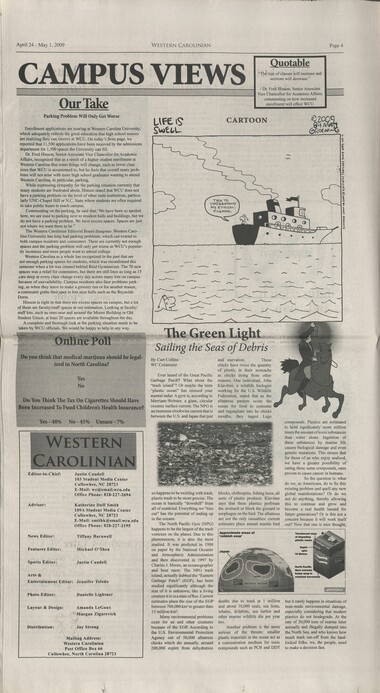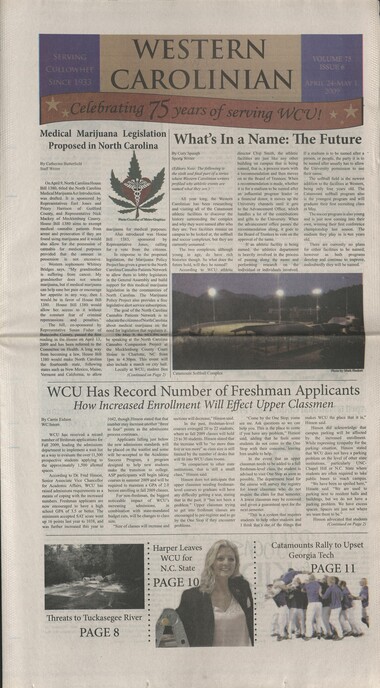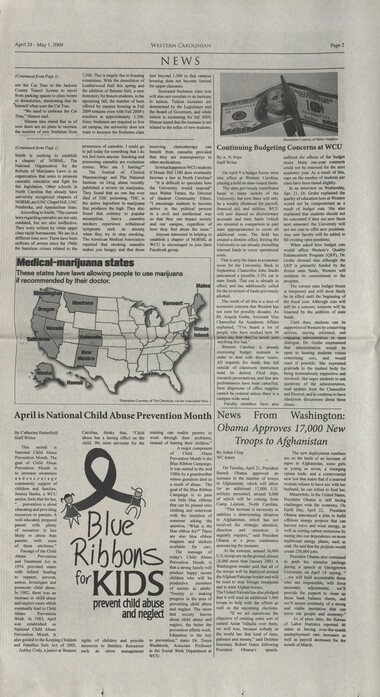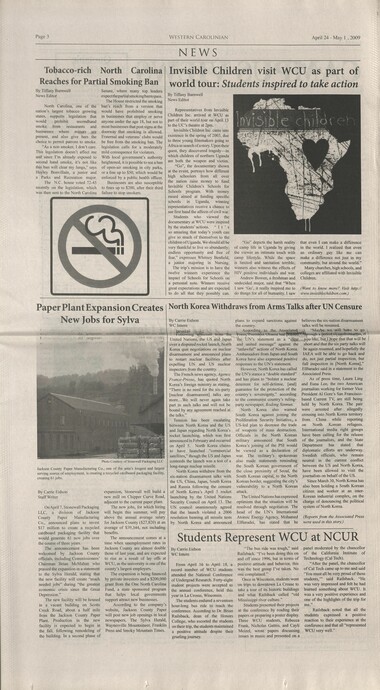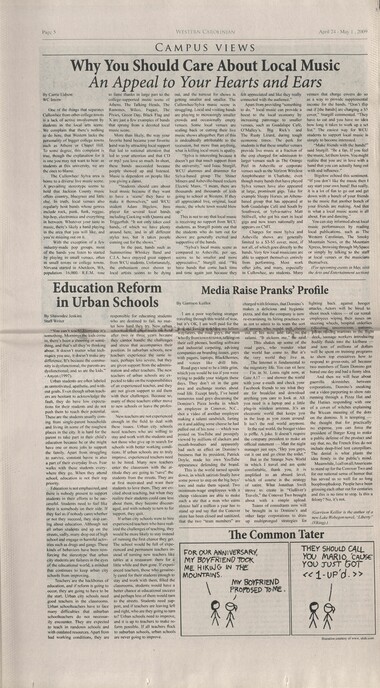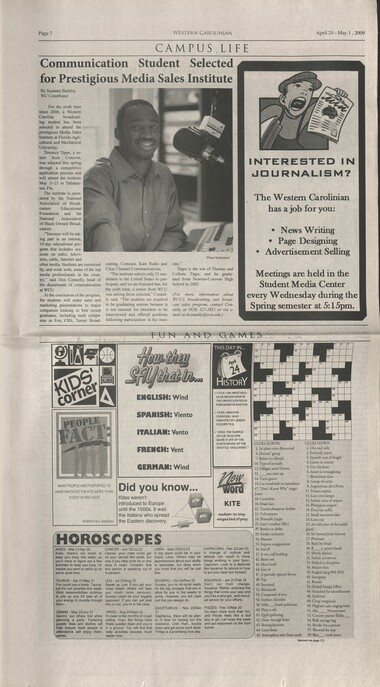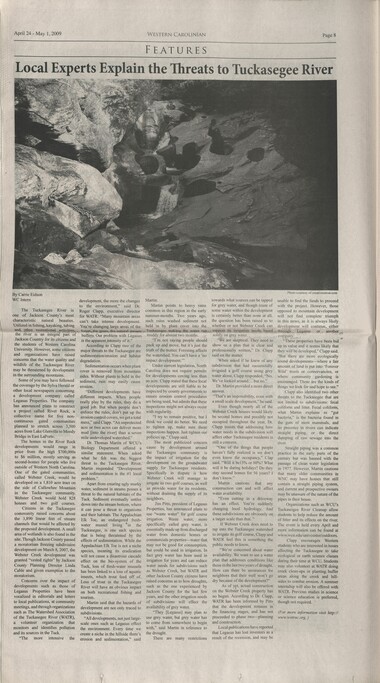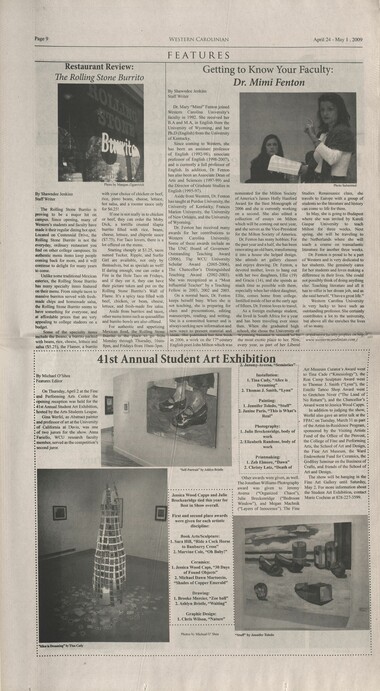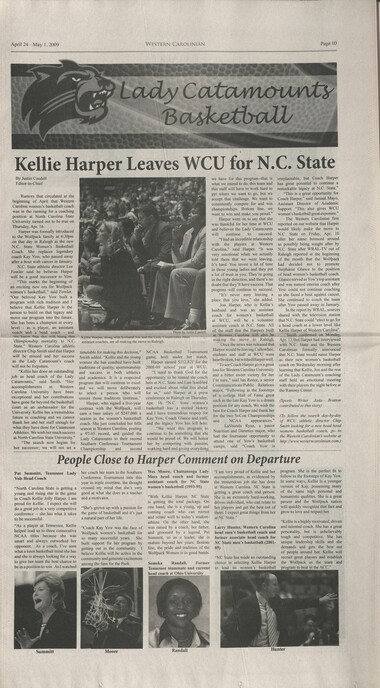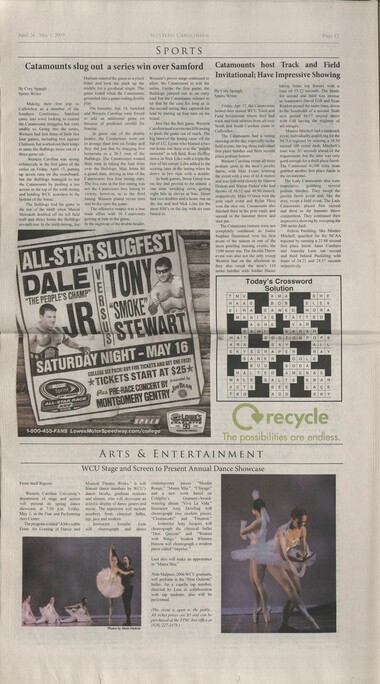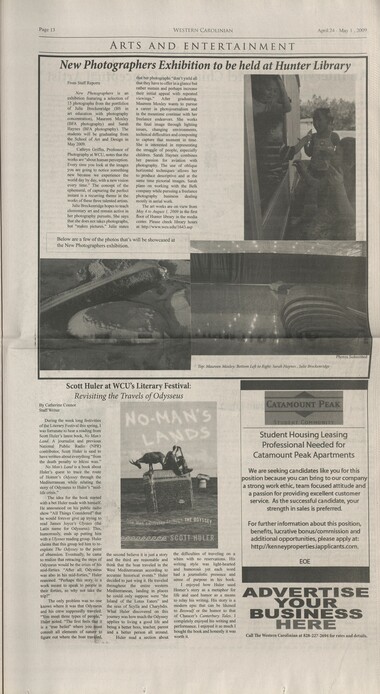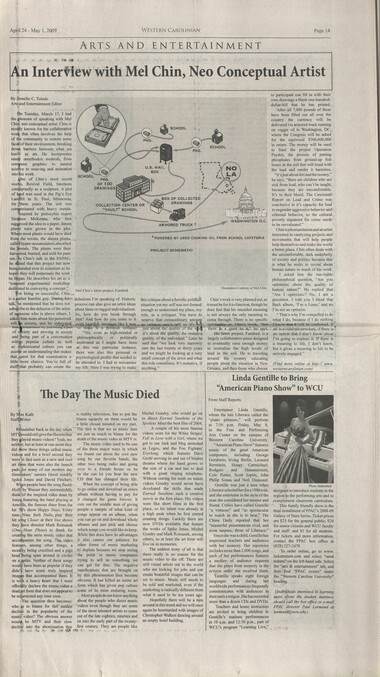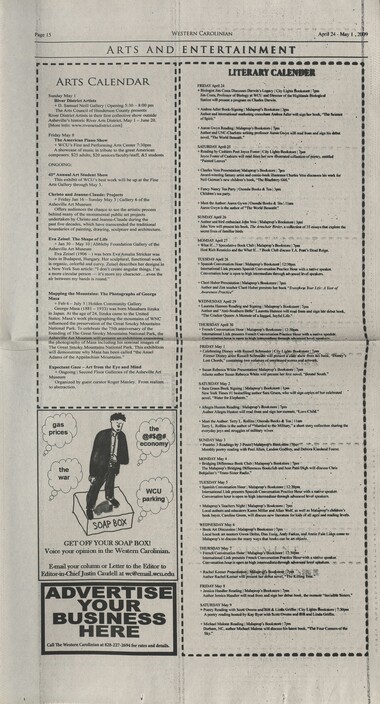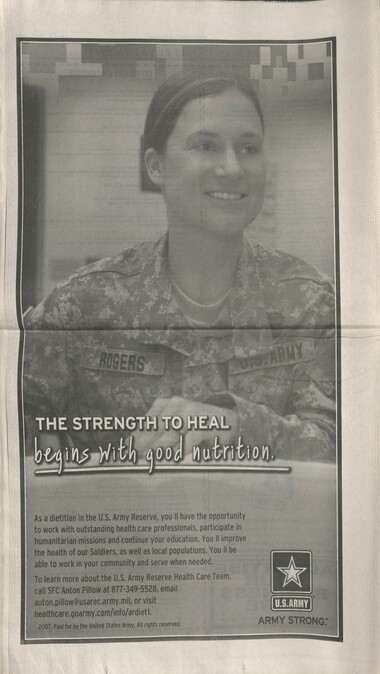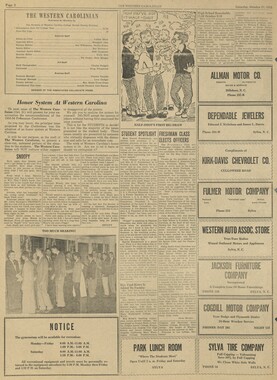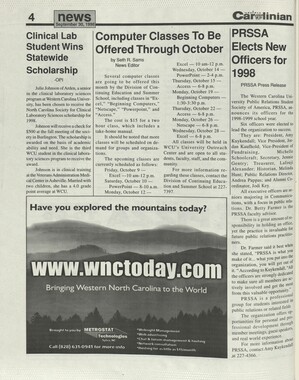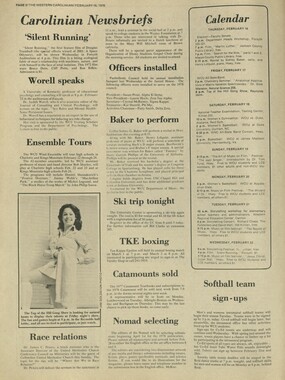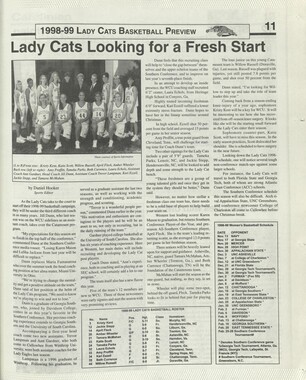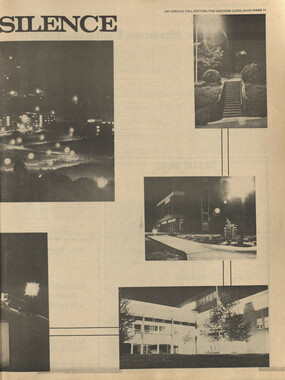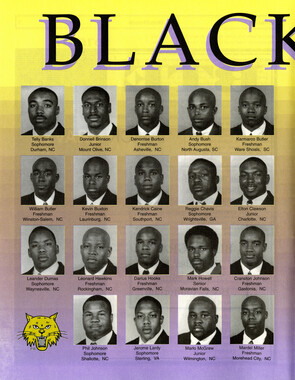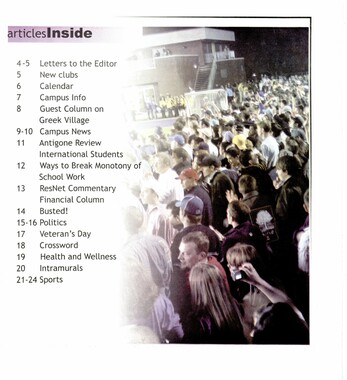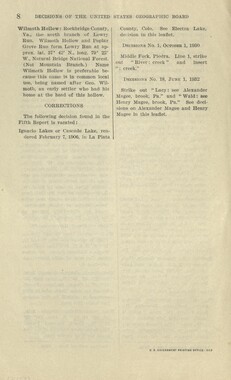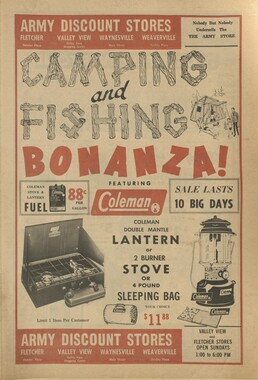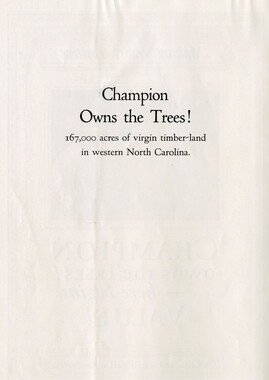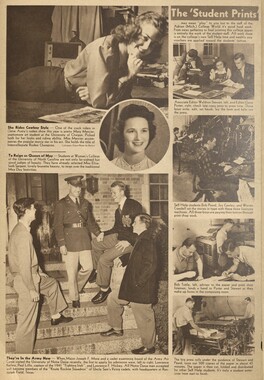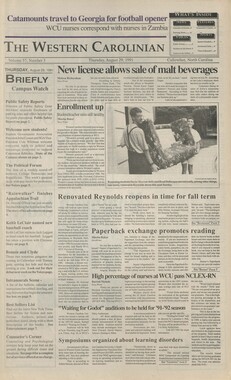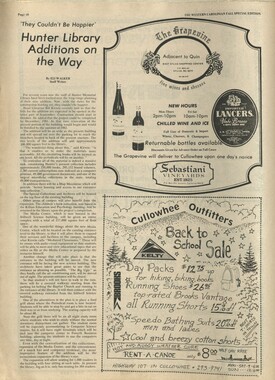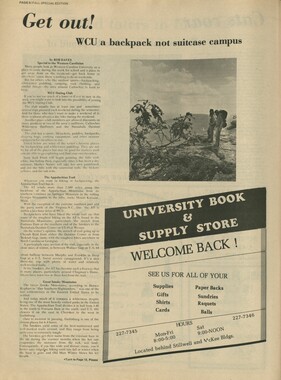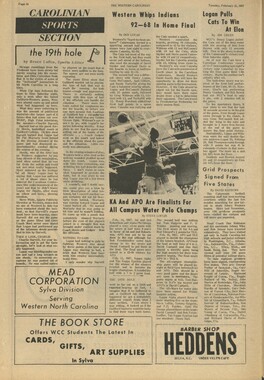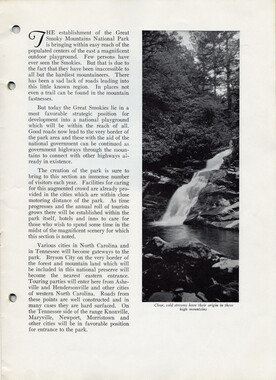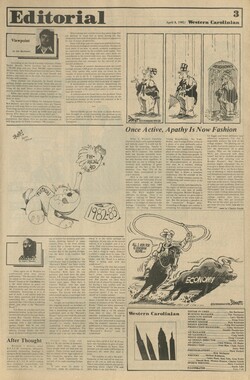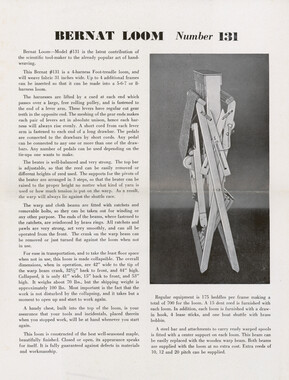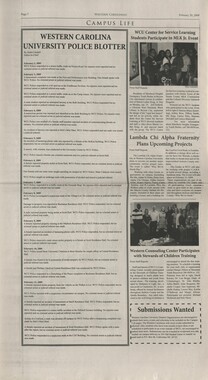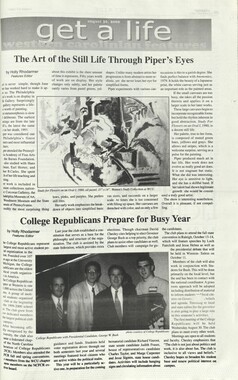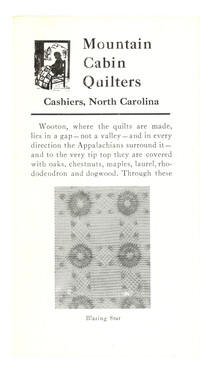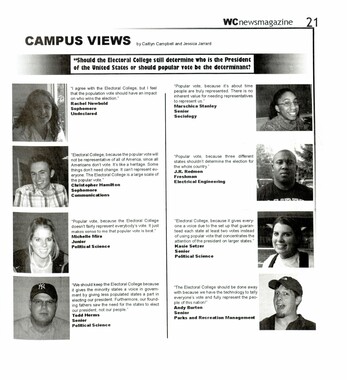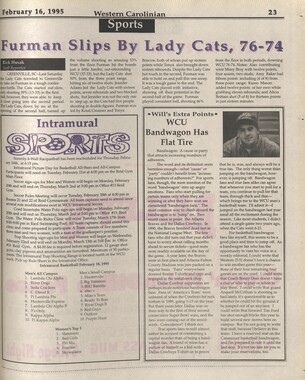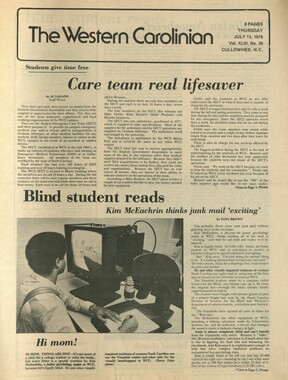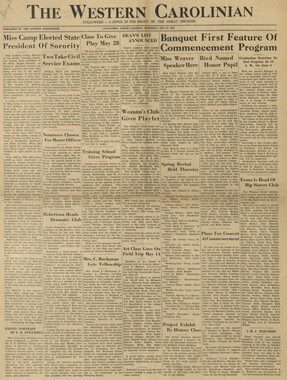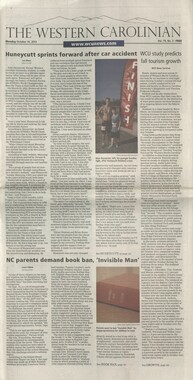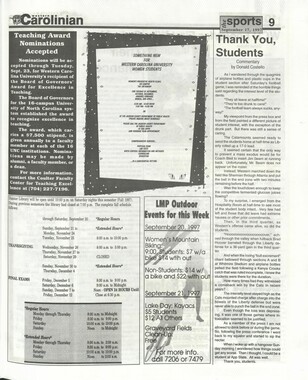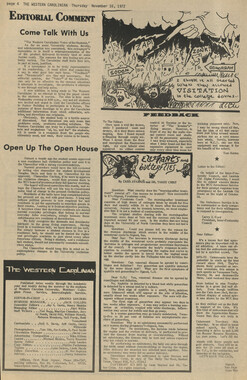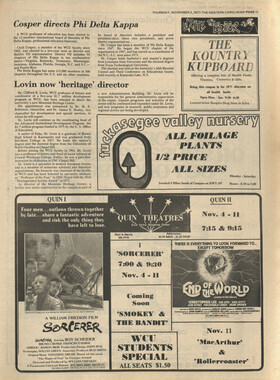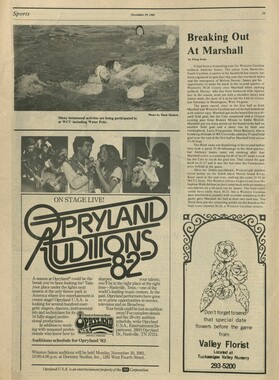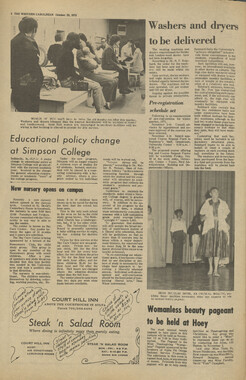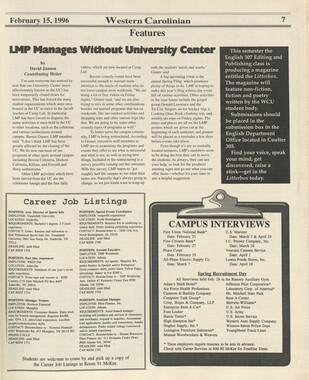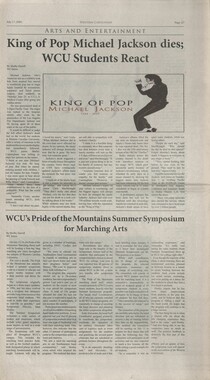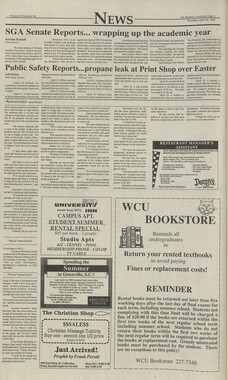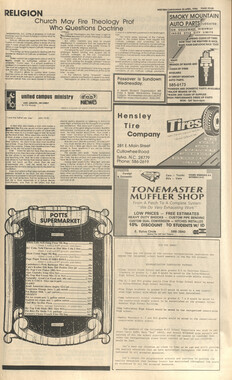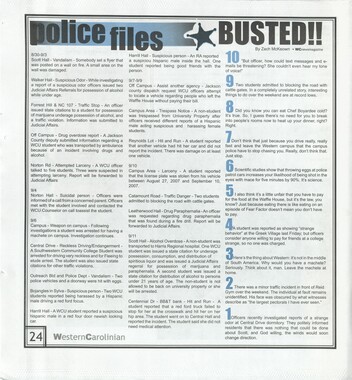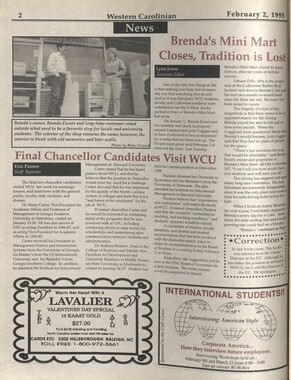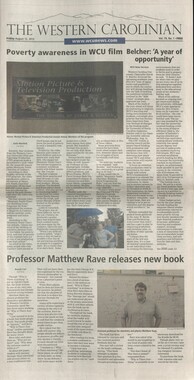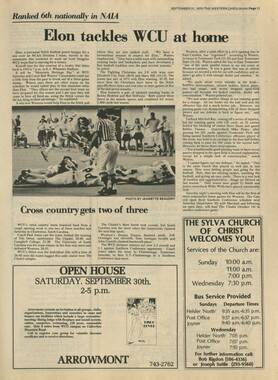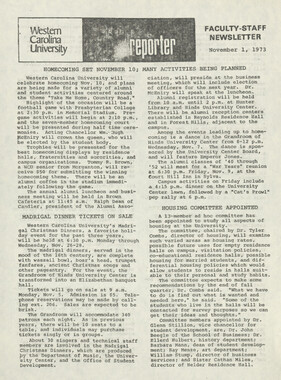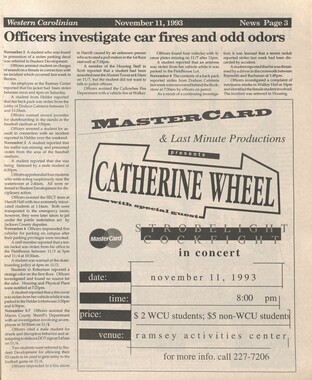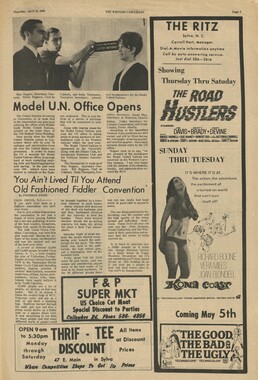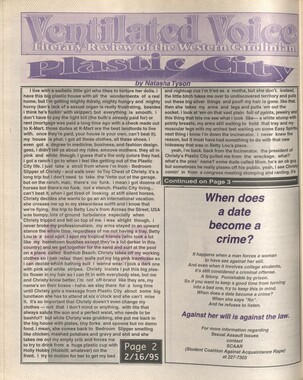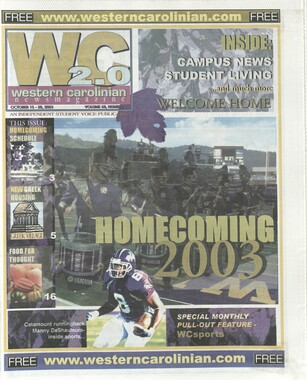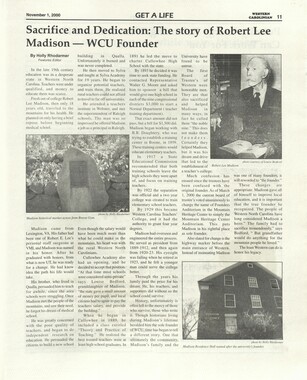Western Carolina University (21)
View all
- Canton Champion Fibre Company (2308)
- Cherokee Traditions (291)
- Civil War in Southern Appalachia (165)
- Craft Revival (1942)
- George Masa Collection (137)
- Great Smoky Mountains - A Park for America (3080)
- Highlights from Western Carolina University (422)
- Horace Kephart (973)
- Journeys Through Jackson (159)
- LGBTQIA+ Archive of Jackson County (89)
- Oral Histories of Western North Carolina (318)
- Picturing Appalachia (6617)
- Stories of Mountain Folk (413)
- Travel Western North Carolina (153)
- Western Carolina University Fine Art Museum Vitreograph Collection (129)
- Western Carolina University Herbarium (92)
- Western Carolina University: Making Memories (738)
- Western Carolina University Publications (2491)
- Western Carolina University Restricted Electronic Theses and Dissertations (146)
- Western North Carolina Regional Maps (71)
- World War II in Southern Appalachia (131)
University of North Carolina Asheville (6)
View all
- Allanstand Cottage Industries (62)
- Appalachian National Park Association (53)
- Bennett, Kelly, 1890-1974 (1463)
- Berry, Walter (76)
- Brasstown Carvers (40)
- Carver, George Washington, 1864?-1943 (26)
- Cathey, Joseph, 1803-1874 (1)
- Champion Fibre Company (233)
- Champion Paper and Fibre Company (297)
- Cherokee Indian Fair Association (16)
- Cherokee Language Program (22)
- Crowe, Amanda (40)
- Edmonston, Thomas Benton, 1842-1907 (7)
- Ensley, A. L. (Abraham Lincoln), 1865-1948 (275)
- Fromer, Irving Rhodes, 1913-1994 (70)
- George Butz (BFS 1907) (46)
- Goodrich, Frances Louisa (120)
- Grant, George Alexander, 1891-1964 (96)
- Heard, Marian Gladys (60)
- Kephart, Calvin, 1883-1969 (15)
- Kephart, Horace, 1862-1931 (313)
- Kephart, Laura, 1862-1954 (67)
- Laney, Gideon Thomas, 1889-1976 (439)
- Masa, George, 1881-1933 (61)
- McElhinney, William Julian, 1896-1953 (44)
- Niggli, Josephina, 1910-1983 (10)
- North Carolina Park Commission (105)
- Osborne, Kezia Stradley (9)
- Owens, Samuel Robert, 1918-1995 (11)
- Penland Weavers and Potters (36)
- Roberts, Vivienne (15)
- Roth, Albert, 1890-1974 (142)
- Schenck, Carl Alwin, 1868-1955 (1)
- Sherrill's Photography Studio (2565)
- Southern Highland Handicraft Guild (127)
- Southern Highlanders, Inc. (71)
- Stalcup, Jesse Bryson (46)
- Stearns, I. K. (213)
- Thompson, James Edward, 1880-1976 (226)
- United States. Indian Arts and Crafts Board (130)
- USFS (683)
- Vance, Zebulon Baird, 1830-1894 (1)
- Weaver, Zebulon, 1872-1948 (58)
- Western Carolina College (230)
- Western Carolina Teachers College (282)
- Western Carolina University (2008)
- Western Carolina University. Mountain Heritage Center (18)
- Whitman, Walt, 1819-1892 (10)
- Wilburn, Hiram Coleman, 1880-1967 (73)
- Williams, Isadora (3)
- Cain, Doreyl Ammons (0)
- Crittenden, Lorraine (0)
- Rhodes, Judy (0)
- Smith, Edward Clark (0)
- Appalachian Region, Southern (3032)
- Asheville (N.C.) (1945)
- Avery County (N.C.) (26)
- Blount County (Tenn.) (195)
- Buncombe County (N.C.) (1680)
- Cherokee County (N.C.) (283)
- Clay County (N.C.) (556)
- Graham County (N.C.) (238)
- Great Smoky Mountains National Park (N.C. and Tenn.) (525)
- Haywood County (N.C.) (3573)
- Henderson County (N.C.) (70)
- Jackson County (N.C.) (4925)
- Knox County (Tenn.) (35)
- Knoxville (Tenn.) (13)
- Lake Santeetlah (N.C.) (10)
- Macon County (N.C.) (421)
- Madison County (N.C.) (216)
- McDowell County (N.C.) (39)
- Mitchell County (N.C.) (135)
- Polk County (N.C.) (35)
- Qualla Boundary (982)
- Rutherford County (N.C.) (78)
- Swain County (N.C.) (2185)
- Transylvania County (N.C.) (270)
- Watauga County (N.C.) (12)
- Waynesville (N.C.) (86)
- Yancey County (N.C.) (72)
- Aerial Photographs (3)
- Aerial Views (60)
- Albums (books) (4)
- Articles (1)
- Artifacts (object Genre) (228)
- Bibliographies (1)
- Biography (general Genre) (2)
- Cards (information Artifacts) (38)
- Clippings (information Artifacts) (192)
- Copybooks (instructional Materials) (3)
- Crafts (art Genres) (622)
- Depictions (visual Works) (21)
- Design Drawings (1)
- Digital Moving Image Formats (2)
- Drawings (visual Works) (185)
- Envelopes (101)
- Exhibitions (events) (1)
- Facsimiles (reproductions) (1)
- Fiction (general Genre) (4)
- Financial Records (12)
- Fliers (printed Matter) (67)
- Glass Plate Negatives (381)
- Guidebooks (2)
- Internegatives (10)
- Interviews (823)
- Land Surveys (102)
- Letters (correspondence) (1045)
- Manuscripts (documents) (618)
- Maps (documents) (177)
- Memorandums (25)
- Minutes (administrative Records) (59)
- Negatives (photographs) (6090)
- Newsletters (1290)
- Newspapers (2)
- Notebooks (8)
- Occupation Currency (1)
- Paintings (visual Works) (1)
- Pen And Ink Drawings (1)
- Periodicals (194)
- Personal Narratives (10)
- Photographs (12977)
- Plans (maps) (1)
- Poetry (6)
- Portraits (4568)
- Postcards (329)
- Programs (documents) (181)
- Publications (documents) (2444)
- Questionnaires (65)
- Relief Prints (26)
- Sayings (literary Genre) (1)
- Scrapbooks (282)
- Sheet Music (2)
- Slides (photographs) (402)
- Songs (musical Compositions) (2)
- Sound Recordings (802)
- Specimens (92)
- Speeches (documents) (18)
- Tintypes (photographs) (8)
- Transcripts (329)
- Text Messages (0)
- A.L. Ensley Collection (275)
- Appalachian Industrial School Records (7)
- Appalachian National Park Association Records (336)
- Axley-Meroney Collection (2)
- Bayard Wootten Photograph Collection (20)
- Bethel Rural Community Organization Collection (7)
- Blumer Collection (5)
- C.W. Slagle Collection (20)
- Canton Area Historical Museum (2110)
- Carlos C. Campbell Collection (462)
- Cataloochee History Project (64)
- Cherokee Studies Collection (4)
- Daisy Dame Photograph Album (5)
- Daniel Boone VI Collection (1)
- Doris Ulmann Photograph Collection (112)
- Elizabeth H. Lasley Collection (1)
- Elizabeth Woolworth Szold Fleharty Collection (4)
- Frank Fry Collection (95)
- George Masa Collection (173)
- Gideon Laney Collection (452)
- Hazel Scarborough Collection (2)
- Hiram C. Wilburn Papers (28)
- Historic Photographs Collection (236)
- Horace Kephart Collection (861)
- Humbard Collection (33)
- Hunter and Weaver Families Collection (1)
- I. D. Blumenthal Collection (4)
- Isadora Williams Collection (4)
- Jesse Bryson Stalcup Collection (47)
- Jim Thompson Collection (224)
- John B. Battle Collection (7)
- John C. Campbell Folk School Records (80)
- John Parris Collection (6)
- Judaculla Rock project (2)
- Kelly Bennett Collection (1482)
- Love Family Papers (11)
- Major Wiley Parris Civil War Letters (3)
- Map Collection (12)
- McFee-Misemer Civil War Letters (34)
- Mountain Heritage Center Collection (4)
- Norburn - Robertson - Thomson Families Collection (44)
- Pauline Hood Collection (7)
- Pre-Guild Collection (2)
- Qualla Arts and Crafts Mutual Collection (12)
- R.A. Romanes Collection (681)
- Rosser H. Taylor Collection (1)
- Samuel Robert Owens Collection (94)
- Sara Madison Collection (144)
- Sherrill Studio Photo Collection (2558)
- Smoky Mountains Hiking Club Collection (616)
- Stories of Mountain Folk - Radio Programs (374)
- The Reporter, Western Carolina University (510)
- Venoy and Elizabeth Reed Collection (16)
- WCU Gender and Sexuality Oral History Project (36)
- WCU Mountain Heritage Center Oral Histories (25)
- WCU Oral History Collection - Mountain People, Mountain Lives (71)
- WCU Students Newspapers Collection (1923)
- Western North Carolina Tomorrow Black Oral History Project (69)
- William Williams Stringfield Collection (2)
- Zebulon Weaver Collection (109)
- African Americans (390)
- Appalachian Trail (35)
- Artisans (521)
- Cherokee art (84)
- Cherokee artists -- North Carolina (10)
- Cherokee language (21)
- Cherokee pottery (101)
- Cherokee women (208)
- Church buildings (190)
- Civilian Conservation Corps (U.S.) (111)
- College student newspapers and periodicals (2012)
- Dams (108)
- Dance (1023)
- Education (222)
- Floods (63)
- Folk music (1015)
- Forced removal, 1813-1903 (2)
- Forest conservation (220)
- Forests and forestry (1198)
- Gender nonconformity (4)
- Great Smoky Mountains National Park (N.C. and Tenn.) (181)
- Hunting (47)
- Landscape photography (25)
- Logging (122)
- Maps (83)
- Mines and mineral resources (9)
- North Carolina -- Maps (18)
- Paper industry (38)
- Postcards (255)
- Pottery (135)
- Railroad trains (72)
- Rural electrification -- North Carolina, Western (3)
- School integration -- Southern States (2)
- Segregation -- North Carolina, Western (5)
- Slavery (5)
- Sports (452)
- Storytelling (243)
- Waterfalls -- Great Smoky Mountains (N.C. and Tenn.) (66)
- Weaving -- Appalachian Region, Southern (280)
- Wood-carving -- Appalachian Region, Southern (328)
- World War, 1939-1945 (173)
Western Carolinian Volume 75 Number 06
Item
Item’s are ‘child’ level descriptions to ‘parent’ objects, (e.g. one page of a whole book).
-
-
April 24 - May 1, 2009 Our Take Parking Problem Will Only Get Worse Enrollment applications are soaring at Western Carolina University, which adequately reflects the good education that high school seniors are realizing they can receive at WCU. On todays front page, we reported that 11,500 applications have been received by the admissions department for 1,500 spaces the University can fill. Dr. Fred Hinson, Senior Associate Vice Chancellor for Academic Affairs, recognized that as a result of a higher student enrollment at _ Western Carolina that some things will change, such as lower class sizes that WCU is accustomed to, but he feels that overall many prob- lems will not arise with more high school graduates wanting to attend Western Carolina, in perticular, parking. While expressing sympathy for the parking situation currently that many students are frustrated about, Hinson stated that WCU does not have a parking problem on the level of other state institutions, particu- larly UNC-Chapel Hill or N.C. State where students are often required to take public buses to reach campus. Commenting on the parking, he said that,We have been so spoiled here, we are used to parking next to resident halls and buildings, but we do not have a parking problem. We have excess spaces. Spaces are just not where we want them tobe. __ The Western Carolinian Editorial Board disagrees. Western Caro- lina University has long had parking problems, which can extend to _ both campus residents and commuters. There are currently not enough spaces and the parking problem will only get worse as WCUs popular- ity increases and more people want to attend college. Western Carolina as a whole has recognized in the past that are not enough parking spaces for students, which was reconfirmed this semester when a lot was created behind Reid Gymnasium. The 70 new spaces was a relief for commuters, but there are still lines as long as 15 cars deep at every class change every day across many lots on campus because of unavailability. Campus residents also face problems park- ing, as when they leave to make a grocery run or for another reason, a commuter grabs their in joep near halls oe as the Reynolds Dorm. Ce i i Hinson is right i in ie there are Excess spaces on campus, but a lot of them are faculty/staff spaces at our estimation. Looking at faculty/ staff lots, such as ones near and around the Moore Building or Old Student Union, at least 20 spaces are available throughout the day. A complete and thorough look at the parking situation needs to be . taken by WCU officials. We would be happy to help in any way. & Editor-in-Chief: Justin Caudell 103 Student Media Center Cullowhee, NC 28723 E-Mail: we@email.weu.edu Office Phone: 828-227-2694 Katherine Duff Smith 109A Student Media Center Cullowhee, NC 28723 E-Mail: smithk@email.weu.edu Office Phone: 828-227-2195 Advisor: News Editor: Tiffany Barnwell Features Editor: Michael OShea Sports Editor; Justin Caudell Arts & ) Entertainment Editor: Jennifer Toledo Photo Editor: Danielle Lightner Amanda LeGaux Maegan Zigarevich OP . y Layout & Design: Distribution: Jay Strong Mailing Address: Western Carolinian Post Office Box 66 Cullowhee, North Carolina 28723 WESTERN CAROLINIAN PUS VIEW LIFES Sweee By Curt Collins WC Columnist Ever heard of the Great Pacific Garbage Patch? What about the trash island? Or maybe the term plastic ocean has crossed your mental radar. A gyre is, according to Merriam-Webster, a giant, circular oceanic surface current. The NPG is an immense clockwise current that is between the U.S. and Japan that just . so happens to be swirling with trash, plastic trash to be more precise. The ocean is basically downhill from all of mankind. Everything we toss out has the potential of ending up in the oceans. The North Pacific Gye (NPG) happens to be the largest of the trash vortexes on the planet. Due to this phenomenon, it is also the most studied. It was predicted in 1988 on paper by the National Oceanic and Atmospheric Administration and then discovered in 1997 by Charles J. Moore, an oceanographer and boat racer. The NPG trash island, actually dubbed the Eastern Garbage Patch (EGP), has been studied significantly although the size of it is unknown; like a living creature it is ina state of flux. Current estimates place the size of the EGP between 700,000 km?to greater than 15 million km. Many environmental problems exist for us and other creatures because of the EGP. According to the U.S. Environmental Protection Agency out of 50,000 albatross chicks which die annually, around 200,000 expire from dehydration Tey To UNDERSTAND MY ETHICAL DILEMMA, eGreen Lig CARTOON ht... Je po. aw Debris and starvation. These chicks have twice the quantity of plastic in their stomachs as chicks dying from other reasons. One individual, John Klavitter, a wildlife biologist working for the U.S. Wildlife Federation, stated that as the albatross parents scour the ocean for food to consume and regurgitate into he chicks mouths, they ingest Lego blocks, clothespins, fishing lures, all sorts of plastic products. Klavitter says that these plastics perforate | the stomach or block the gizzard or esophagus on the bird. The albatross are not the only casualties: current estimates place annual marine bird Quotable The size of classes will increase and sections will decrease. - Dr. Fred Hinson, Senior Associate Vice Chancellor for Academic Affairs, commenting on how increased enrollment will effect WCU. Dah. on Sle Ratoni Bae Page 4 Snipsoy9 aww he bootG 2102 4rhs [3yrivad SHOY OOGLAE compounds. Plastics are estimated to hold significantly more million times the amount of toxic substances than water alone. Ingestion of these substances by marine life causes biological damage and even genetic mutations. This means that for those of us who enjoy seafood, we have a greater possibility of eating these same compounds, ones proven to cause cancer in humans. So the question is: what do we, as Americans, do to fix this existing problem and quell any new global manifestations? Or do we not do anything, thereby allowing this to continue and grow and become a real health hazard for future generations? Or is this not a concern because it will work itself out? Now that one is nice thought, deaths due to trash at 1 million and about 10,000 seals, sea lions, whales, dolphins, sea turtles and other marine wildlife die per year too. Another problem is the more serious of the threats: smaller plastic materials in the ocean act as a concentration medium for toxic compounds such as PCB and DDT but it rarely happens in situations of man-made environmental damage, especially considering that modern plastics do not biodegrade. At the rate of 20,000 tons of marine litter annually and illegally dumped into the North Sea, and who knows how much trash run-off from. the land- locked folks, we, the people, need to make a decision fast.
Object
Object’s are ‘parent’ level descriptions to ‘children’ items, (e.g. a book with pages).
-
The Western Carolinian is Western Carolina University's student-run newspaper. The paper was published as the Cullowhee Yodel from 1924 to 1931 before changing its name to The Western Carolinian in 1933.
-
